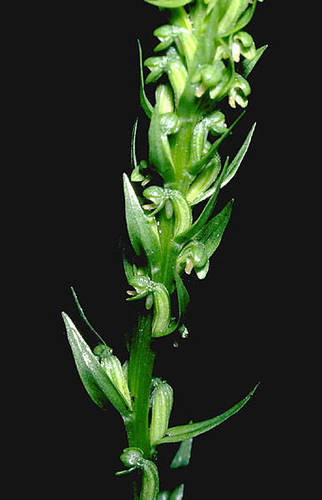Top 10 Rarest Orchids in the World. Orchids are among the flowers that are cultivated and collected the most frequently all over the world.
They are extraordinary flowers in terms of their appearance and their level of vibrancy, which garner a lot of attention.
Sadly, all of this attention has proved detrimental to the well-being of orchids. The overexploitation of several species for commercial purposes has led to their sale on the underground market for exorbitant prices.
The wild populations of a great number of orchid species all over the world have suffered a catastrophe as a direct result of this, including practically all of the rare orchids included on this list.
To make conditions even more precarious, the natural habitats of orchids are in danger as a result of human activities such as deforestation and other activities.
Top 10 Rarest Orchids in the World
1. Sérapias à Pétales Étroits
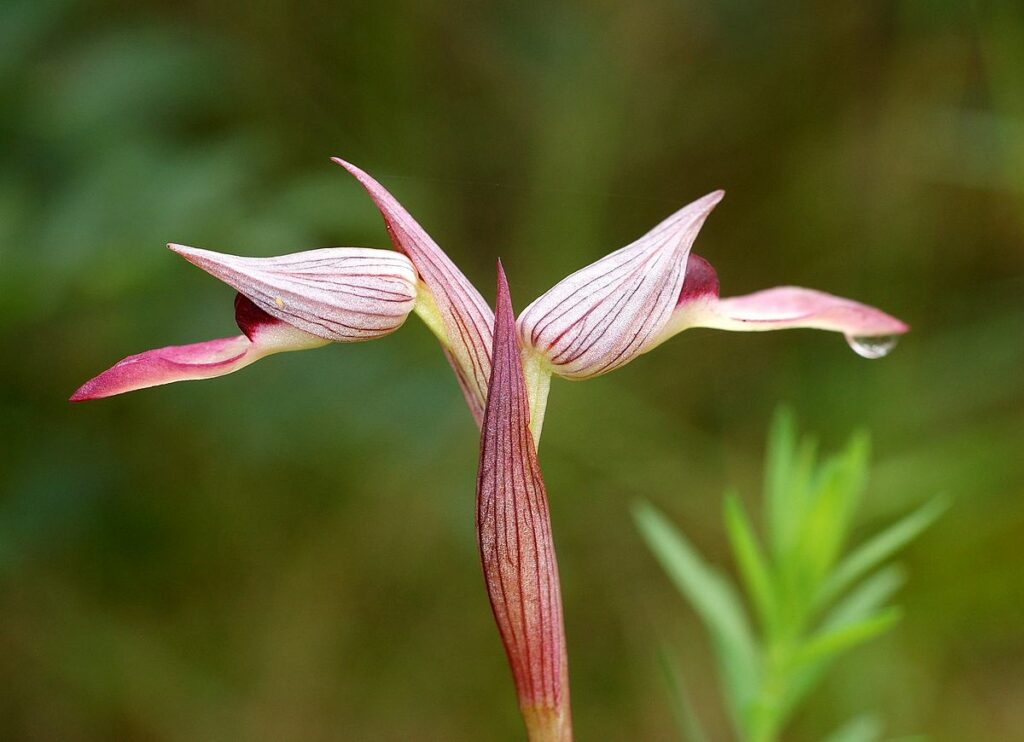
- Current Estimated Numbers: fewer than 250
- Location (Range): Algeria and Tunisia
- Scientific Name: Serapias stenopetala
- Conservation Status: Critically Endangered
The Sérapias à Pétales Étroits orchid, which is indigenous to Algeria and Tunisia, is a species that is at grave risk of extinction due to its extremely low population size.
There are only a handful of locations in both nations that support the growth of the Sérapias à Pétales Étroits, and it is thought that each group contains less than fifty fully grown plants. Approximately 250 individuals make up the entirety of the Sérapias à Pétales Étroits population.
The Sérapias à Pétales Étroits is in serious danger of extinction due to excessive collection, in contrast to some of the other rare orchids on this list (despite the fact that it is quite unremarkable in comparison to some of the more well-known orchids on this list).
The Sérapias à Pétales Étroits, on the other hand, is in danger due to the erosion of roadside ditches, the trampling and grazing of cattle, and the construction of an Animal Park (Brabtia).
There are no supplementary conservation programs in place to safeguard the Sérapias à Pétales Étroits, despite the fact that all orchids are protected under Annex B of the Convention on International Trade in Endangered Species of Wild Fauna and Flora (CITES), which prohibits international trade in endangered species of wild fauna and flora.
2. Rothschild’s Slipper Orchid
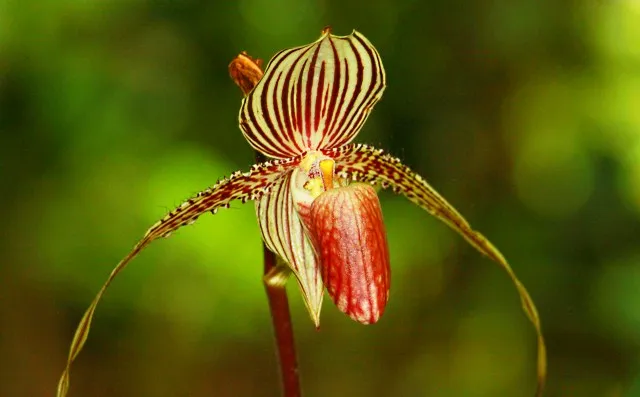
- Current Estimated Numbers: fewer than 50
- Location (Range): Borneo, Sabah, Malaysia
- Scientific Name: Paphiopedilum rothschildianum
- Conservation Status: Critically Endangered (CR)
The Rothschild’s Slipper Orchid, which is also known as the Gold of Kinabalu Orchid, is one of the rare orchids that are in the highest demand all over the world.
There have been claims in the media indicating that a single stem of the Rothschild’s Slipper Orchid can cost as much as $5,000 on the underground market.
Unfortunately, Rothschild’s Slipper Orchid’s popularity among orchid collectors has resulted in a significant decline in its status in the environment in which it naturally occurs.
The only place on earth where you can find the Rothschild’s Slipper Orchid is on Mount Kinabalu in northern Borneo, Malaysia.
According to estimations provided by the IUCN Red List, there are currently fewer than 50 Rothschild’s Slipper Orchids in existence.
In addition, the IUCN Red List notes that despite the fact that the Rothschild’s Slipper Orchid is in high demand, it is still only occasionally grown in captivity, and the vast majority of the plants that are put up for sale originate from the wild population.
3. Urban’s Paphiopedilum
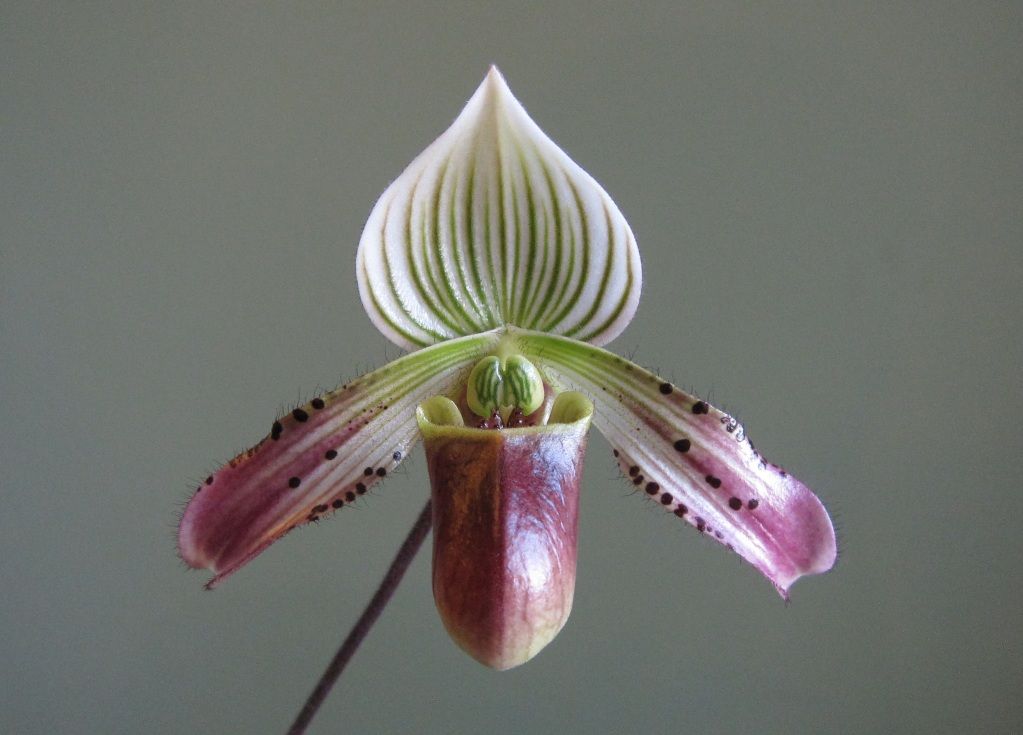
- Current Estimated Numbers: fewer than 50; very close to extinction in the wild
- Location (Range): Mindoro Island, Philippines
- Scientific Name: Paphiopedilum urbanianum
- Conservation Status: Critically Endangered (CR)
The Urban’s Paphiopedilum is yet another rare orchid on this list that has come dangerously close to extinction in its natural habitat as a direct result of people’s insatiable desire to acquire this stunning orchid.
According to the IUCN Red List, the population of Urban’s Paphiopedilum has been almost entirely wiped off and has decreased by more than 95% in the last 100 years.
Poaching is one of the most significant dangers faced by the Urban Paphiopedilum; other significant dangers include degradation of its habitat, trampling, development of settlement areas, deforestation, irregular fires, logging, random cutting, slash-and-burn agriculture, and soil erosion. It is currently believed that there are less than 50 individuals of the Urban’s Paphiopedilum still living in their natural habitat.
4. Liem’s Paphiopedilum
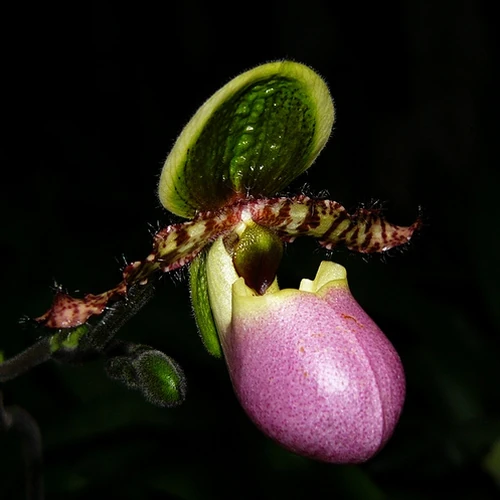
- Current Estimated Numbers: fewer than 50
- Location (Range): Northern Sumatra, Indonesia
- Scientific Name: Paphiopedilum liemianum
- Conservation Status: Critically Endangered (CR)
Liem’s Paphiopedilum is dangerously close to extinction in the wild; nonetheless, this uncommon orchid is frequently available for purchase at a variety of online outlets or for trading on online forums dedicated to orchids.
The Liem’s Paphiopedilum is endemic to northern Sumatra, Indonesia, and can only be found in a single location that is 4 km2 (1.54 mi2) in size. The widespread appeal of this plant is the greatest danger it faces.
The population of Liem’s Paphiopedilum began a precipitous drop in 1971 as a direct result of over-collecting, despite the fact that in the past it had been abundant.
Even at that time, the wild population of Liem’s Paphiopedilum was dangerously close to being lost forever, and it has never fully recovered.
There are less than fifty Liem’s Paphiopedilum plants left in an area that is inaccessible, and these are the only things that are preventing the orchid from going extinct entirely.
5. Sang’s Paphiopedilum
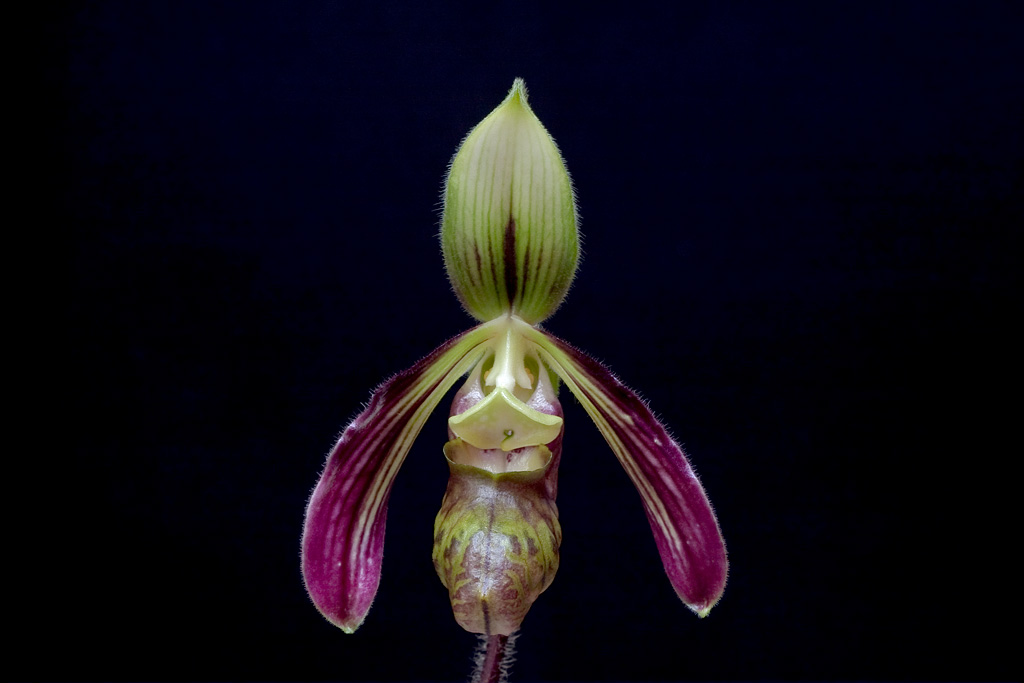
- Current Estimated Numbers: fewer than 50
- Location (Range): Northern Sulawesi, Indonesia
- Scientific Name: Paphiopedilum sangii
- Conservation Status: Critically Endangered (CR)
The Sang’s Paphiopedilum is an extremely uncommon species of orchid that can only be found in the forested mountain regions of northern Sulawesi in Indonesia.
It is predicted that Sang’s Paphiopedilum can only be found growing in an area that is a total of 8 kilometers squared (3.1 square miles).
In spite of how challenging it is to reach, Sang’s Paphiopedilum has been over-harvested for the purpose of regional and worldwide trade.
Deforestation, logging, wildfires, and the degradation of natural habitats are other major threats to the Sang’s Paphiopedilum.
According to the IUCN Red List, the wild population of Sang’s Paphiopedilum has dropped by approximately ninety percent in the past ten years.
To our good fortune, the surviving Sang’s Paphiopedilum are located in a location that is challenging to access. One of the few things that are now keeping this unique orchid from going extinct is because of you.
6. Fairrie’s Paphiopedilum
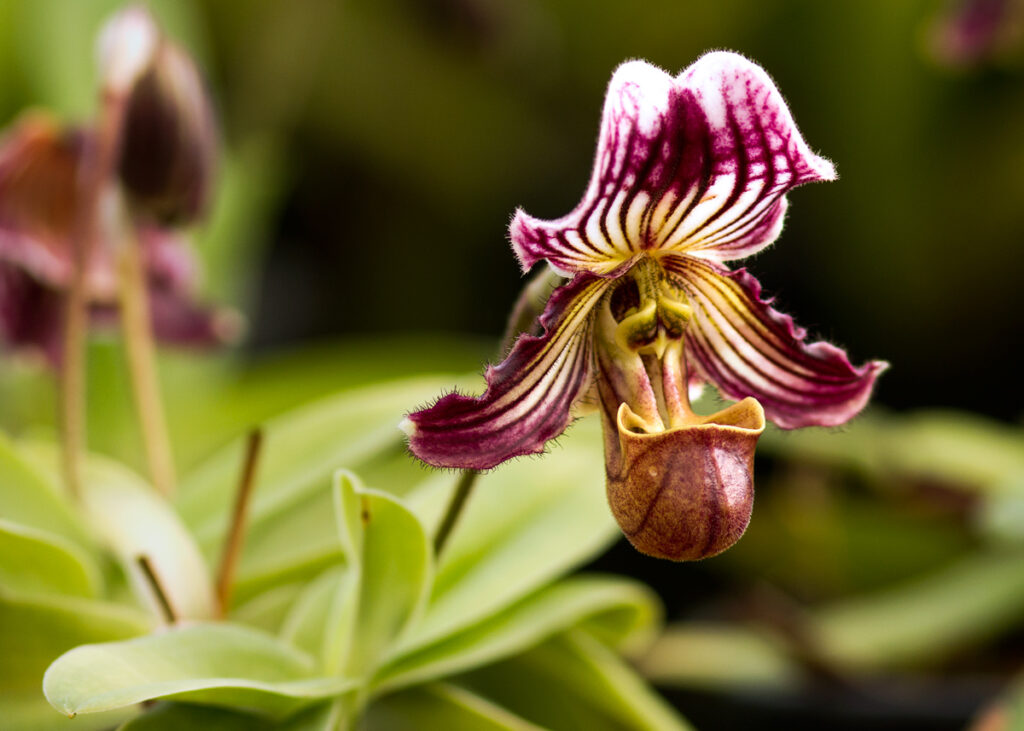
- Current Estimated Numbers: fewer than 50
- Location (Range): Eastern Himalayas to Assam, India
- Scientific Name: Paphiopedilum fairrieanum
- Conservation Status: Critically Endangered (CR)
The stunning appearance of Fairrie’s Paphiopedilum, like that of many of the other rare orchids on this list, is the primary factor contributing to its critically endangered status.
Fairrie’s Paphiopedilum has petals that are brilliant purple and white, and it has markings that are yellowish-green.
Because of its attractive appearance, Fairrie’s Paphiopedilum has become one of the most widely grown orchid species in gardens all over the world. Unfortunately, due to the strong demand for the orchid, Fairrie’s Paphiopedilum has been over-collected from its natural habitat.
Both India and Bhutan had specimens of Fairrie’s Paphiopedilum in their collections at one time. The sole population of Fairrie’s Paphiopedilum that is still alive today can be found in the eastern Himalayas and as far east as Assam.
Shortly after its discovery in 1904, Fairrie’s Paphiopedilum became extinct in Bhutan and has not been seen there since.
7. Western Underground Orchid
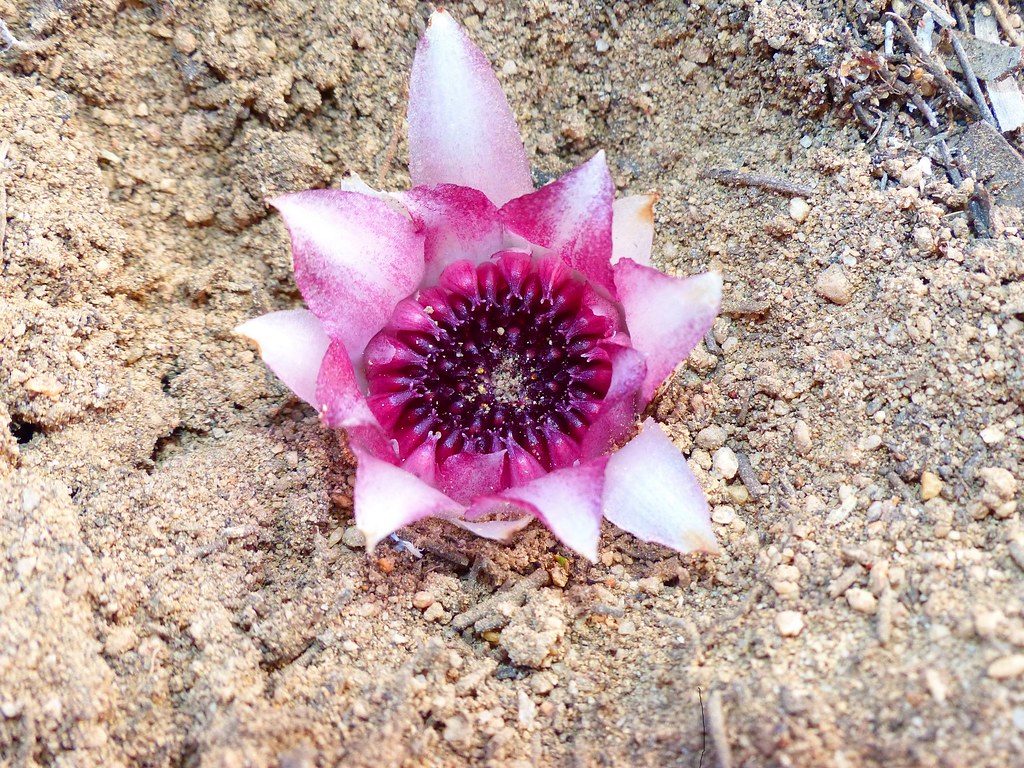
- Current Estimated Numbers: fewer than 50
- Location (Range): Western Australia
- Scientific Name: Rhizanthella gardneri
- Conservation Status: Critically Endangered (CR)
The Western Underground Orchid is one of the most extraordinary and one of the least common flowers that can be found anywhere in the globe.
The Western Underground Orchid does, in fact, spend its entire life underground, as the name of the plant suggests.
This unique orchid even manages to blossom while buried in the ground. The Western Underground Orchid is an example of an orchid that does not photosynthesize and does not have any green elements, such as stems or leaves.
The Western Underground Orchid, on the other hand, derives all of its nutritional requirements from the fungus that colonize the broom bush’s root system.
It is thought that there are less than fifty Western Underground Orchids left in existence at this time. It might be challenging to get an accurate count of the population size because it typically takes several hours of laborious digging to unearth a single Western Underground Orchid. This makes it tough to locate and count individual individuals.
8. Vietnamese Paphiopedilum
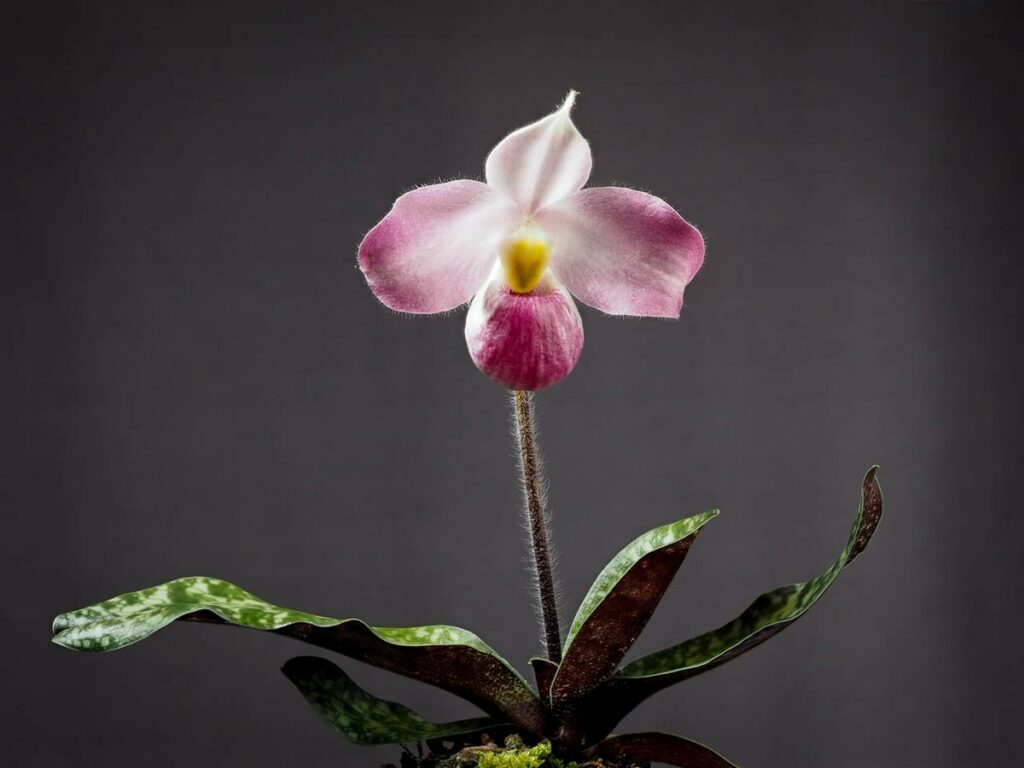
- Current Estimated Numbers: possibly extinct in the wild; fewer than 50
- Location (Range): Thái Nguyên Province in northern Vietnam
- Scientific Name: Paphiopedilum Vietnamese
- Conservation Status: Critically Endangered (CR)
Although the Vietnamese Paphiopedilum has likely become extinct in its natural habitat, it is nevertheless commonly cultivated as an ornamental plant by orchid collectors all over the world.
The Vietnamese Paphiopedilum is being over-harvested in the wild, just like the majority of other species of orchids, including the rare ones on our list as well as species with higher numbers. The Vietnamese Paphiopedilum is cultivated by people for the sake of horticulture and traded internationally.
According to the IUCN Red List, the population of paphiopedilum in Vietnam has dropped by 95% over the course of the past three generations.
The most recent information regarding the surviving plants was collected in 2003, and it is possible that there are less than 50 Vietnamese Paphiopedilum left. Only in the province of Thái Nguyên in the far north of Vietnam can one find this extremely rare orchid.
9. Hawaiian Bog Orchid
- Current Estimated Numbers: 28 – 33
- Location (Range): Various Hawaiian Islands – Alaka‘i Wilderness Preserve, Kaua‘i; Kamakou
- Preserve, Moloka‘i; Hanaula West Maui Forest Reserve, Waikamoi Preserve, and Kapunakea
- Preserve in Maui
- Scientific Name: Peristylus halophila
- Conservation Status: Critically Endangered (CR)
The Hawaiian Bog Orchid is the most endangered of all the native orchid species in Hawaii. At the time of the most recent survey, which took place in 2011, just 33 Hawaiian Bog Orchids were located in their natural habitat on three of Hawaii’s islands.
The decimation of the Hawaiian Bog Orchid’s habitat at the hands of humans, domestic animals, and wild animals is the primary danger to this species. This endangered Hawaiian orchid is in danger not just from invasive non-native plant species but also from human activity.
There are now continuing conservation efforts for the Hawaiian Bog Orchid, despite the fact that it is becoming increasingly rare in its natural habitat.
In recent years, environmentalists have been cultivating seedlings of the Hawaiian Bog Orchid and re-planting them in their natural environments.
The aim of conservationists is that the seedlings will be able to endure over the long run and maintain a healthy population of Hawaiian Bog Orchids.
10. Zeuxine rolfiana
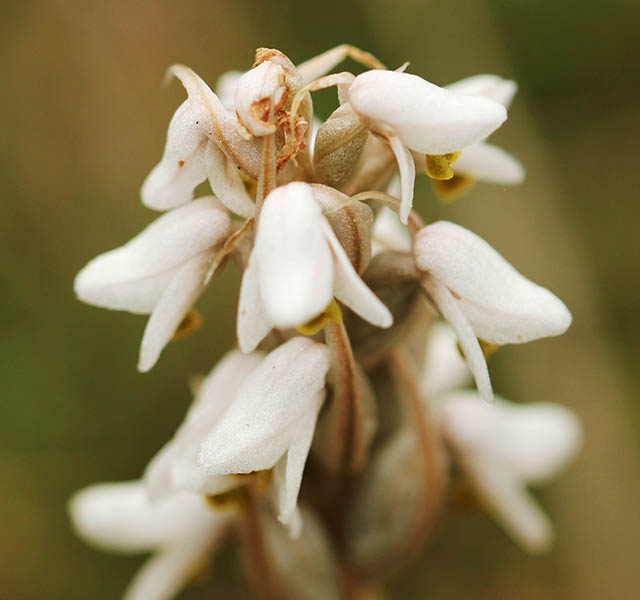
- Current Estimated Numbers: about 18
- Location (Range): Mount Harriet, South Andaman Island, India
- Scientific Name: Zeuxine rolfiana
- Conservation Status: Critically Endangered (CR)
After having been known exclusively from records that dated back more than 121 years, the Zeuxine rolfiana was not rediscovered in the wild until the year 2010.
Even while the discovery of the plants themselves is noteworthy, the researchers were only able to uncover about 18 Zeuxine rolfiana that were sterile.
The Zeuxine rolfiana is the rarest orchid in the world due to the fact that there are so few individuals surviving and there are no signs that the remaining plants will breed.
Three specimens of Zeuxine rolfiana were found at the Botanical Garden of St. Joseph’s College in Kozhikode, which is located in the state of Kerala in India.
These specimens were collected in 2010 by a team of researchers. The orchids did end up producing flowers in the gardens, although they did so briefly before passing away.
The Zeuxine rolfiana’s natural habitat is in grave danger as a result of the enormous building that is taking place in the area.
Top 10 Rarest Orchids in the World- Newshub360.net
Related Post
Credit: www.Newshub360.net

